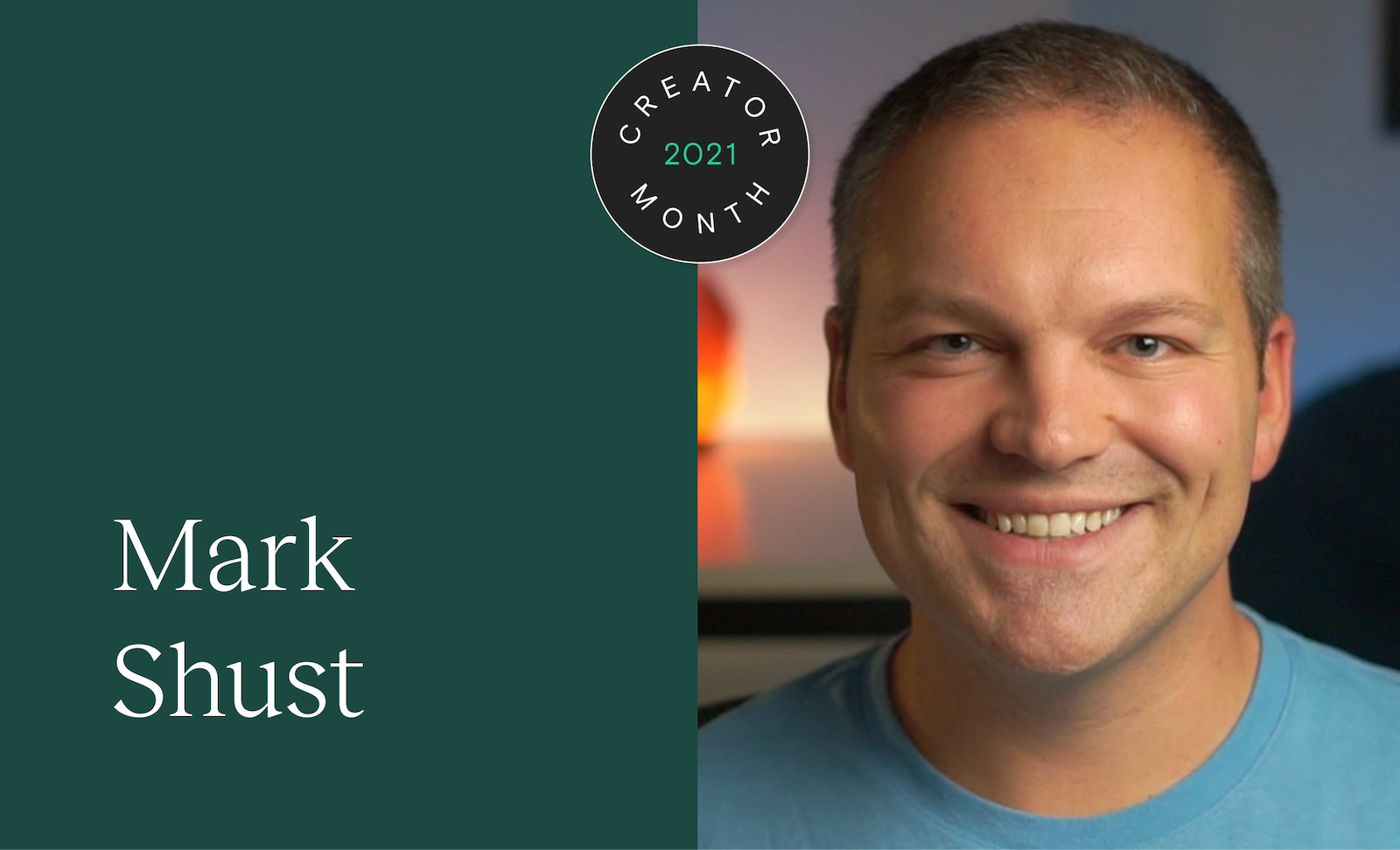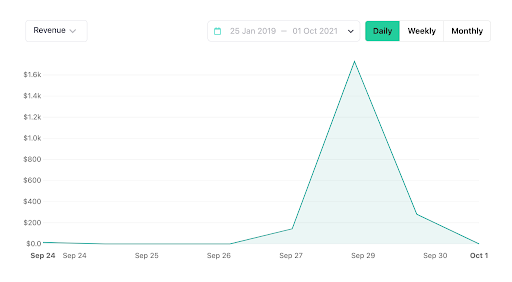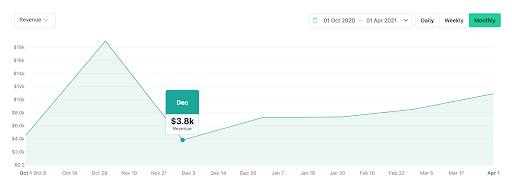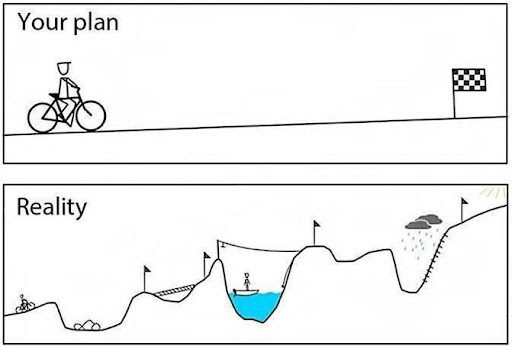Creator tip: Handling inconsistent revenue streams as a full-time course creator


The following is a guest post from Teachable creator, Mark Shust. Mark’s passion over the last decade has revolved entirely around Magento. Starting with the early days of Magento 0.8, he had a heavy interest in the Zend and Magento Frameworks and has been devoted to eCommerce & PHP for even longer (over 20 years!). Today, he works for him as a course creator for M.academy, a company he founded which simplifies teaching Magento development. In honor of Teachable’s Creator Month, in which we celebrate and share the expertise of creators everywhere, Mark shares his tips for handling inconsistent revenue streams when course creation is your main source of income.
This was my last week of course sales:


Is this for real?
Yes. And it’s a very typical situation I find myself being in time and time again, even though I have grossed over $100,000 in Teachable course sales revenue streams over this past year.
For the last couple of years, I’ve been focusing on growing my technical education course business. Starting as a typical full-time employee at various internet development agencies, I eventually switched over to contracting and consulting. However, I always knew I wanted to have a more autonomous position.
I combined my skills of programming with my ability to learn, along with my knowledge of creating screencasts, to come up with M.academy. Focusing purely on the Magento eCommerce framework, I knew I was onto something and could become the best in the world at this specific niche.
Fast forward about 18 months, and I was able to suspend all of my consulting services to focus 100% of my attention to creating additional related courses. When I left consulting, I was pulling down a higher consistent income from the sale of my courses and subscriptions, lending credence to the fact that I was barking up the right tree.
Not always peachy
While I’ve had very consistent sales over this time, especially since the time I added subscriptions, there have been times of great despair. Imagine going from making nearly $20,000 in a single month, and then not even hitting $4,000 the following month:


These ups and downs are prevalent in all businesses. But volatility in the course creation business is very present, and the above has happened to me more than once. While additional offerings such as subscriptions can help the mix, there will undoubtedly be periods of extreme downturns. No one talks about “summer sadness” as a course creator.
I’m sure you’ve all seen this meme, and it couldn’t be closer to the truth:


So, how do you weather this storm? The best way I’ve learned to deal with these periods of ups and downs is by establishing a set of guidelines. By focusing on the practice rather than the outcome and taking a longer-timeframe point of view, you are much more likely to stay the course when things get rough.
Let’s go over a few of these principles that will help you stay focused.
Establish a long-term viewpoint
You most likely thought about or dove into the course creation business because you imagined a new future for yourself. One in which you created your own hours, made your own rules, and had complete control over your daily schedule with full autonomy. And one in which you can provide the world with the ability to learn the skills that took you many years to pick up in your industry.
Just because you had a rough week, month, or few months, shouldn’t change that conviction. Creating any successful business typically takes many years. If you take the result of your effort and zoom out, you will most likely see that you have made significant progress over the years, given you put in consistent time and effort.
Those giant dips and gains in stock charts? They are usually barely noticeable when zoomed out over a longer timeframe. The daily charts, like the one posted at the top of this article? Ignore them. Those are just noise when you take a look at the bigger picture.
Focus on the practice
One of my favorite authors, Seth Godin, wrote a book about this called, The Practice. I’ve also listened to numerous podcasts by Seth, in which he mentions ignoring the results, and focusing purely on “the practice.”
If you focus only on the results, you will eventually run out of time. By instead focusing on the process, you will put all of your effort into creating a better product. It’s ironic, but you will have better results by focusing on the process rather than the results. I was able to do this by creating better course curriculums. This helped me craft my skill by creating better individual video lessons, which in turn lead to the creation of better courses.
The course that I’m the most proud of creating is that course that has the least amount of sales. I went very far down the rabbit hole to learn an extremely complex topic and simplify the process for learning it. Unfortunately, the demand for the course was not there. It is still a fantastic course, but the sales don’t necessarily reflect the quality and effort I put into creating this course.
Will you let yourself get down, knowing that you created this awesome piece of knowledge and put it out there for the world to see, or will you let yourself be judged on something you can’t control?
Success can come from anywhere
Similarly, one of my more successful courses wasn’t a course at all, but a simple complementary product that made my other lessons easier to create because it generated chunks of code for you in a few keystrokes. This course was very easy for me to create, and took the least amount of effort of all my courses. Am I proud of it? Sure, but the sales from this offering do not help me sleep at night. What does is knowing that I put out a good product.
Creating courses and related content is fantastic because your inputs are not tied to your outputs, but this concept goes both ways.
Provide more value
What makes a successful business? Providing something of more value than what it is worth. This doesn’t necessarily mean that you need to make a 20-hour course and sell it for $49. Quite the opposite: Price for what things are worth, but provide tremendous value.
My courses are not on the cheaper side, but they are definitely not the most expensive. Pricing is always hard to determine, and finding that sweet spot is a very important part of your business if you wish to create courses for a living. Teachable gets this right in their article about how to price your online course. I actually used this exact article to help me price my own courses, and it helped me recognize that premium pricing is the way to help my business scale.
Are your prices sustainable?
If you’d like to make $100,000 a year and your courses are priced at $49, you will need to sell over 2,000 copies of your course to hit your goal. If you instead price your course at $299, you need to sell a few more than 300 copies to hit your goal. Many starting out fail to compute these simple economic calculations, and ignoring this could destroy any potential of creating your own sustainable course business.
Over the last couple years, I have clocked over 500 sales of my courses and subscriptions, with an average sale of nearly $250. If I undercut myself and charged only 20% of that price, I would have had the hard feat of needing to quintuple my number of sales in order to hit the same revenue stream figures that I do today. By providing more value at a higher price-point, I also have higher-quality, more engaged students.
If you are already priced for premium content, you can increase the value provided to your students by adding value to your existing offerings. This can include additional lessons, study guides, cheat sheets, one-off webinars, and more. The best way to promote and discount your course offerings is by providing additional value to your students.
Promote more
Are your sales down because of a seasonal slump, or have you stopped promoting your offerings? You’ve heard this before, but “If you build it, they will not come.” For your social media plan (you do have one, right?), you should be consistently making your voice heard, and roughly 20% of your posts should be self-promoting your offerings. With my own posts, I randomize this with code snippets that teach simple programming concepts, posting clips from my free preview lessons that plug my course, in addition to unique offerings on my site such as Purchasing Power Parity promo codes.
Running ads will not really help course creators. While I still test new methods of advertising, an overwhelming majority of students will find out about you from your social media posts, blog posts, YouTube videos, and email blasts.
Spread the value
Haven’t you ever wanted to get paid for creating YouTube videos? By providing the viewer with value, you can mention your course offerings at the middle or end of your videos, pushing traffic to your website, that could potentially lead to a sale. Even better, push them to a free course offering or giveaway, or to a signup page for your newsletter. Once they enter your email funnel, they’ll be on the long track with the potential to eventually become one of your students.
Do you have trouble coming up with content? Learn about repurposing. Those YouTube videos you just made? Turn them into blog posts. Have a neat tidbit of knowledge in your blog post? Screenshot it and turn it into a social media post. And remember to occasionally direct those interacting with your content into your email funnel, so you can keep providing them with additional content to learn.
Once you have built up a funnel of hundreds or thousands of potential students, keep in touch with them at least once a month, and not just when you have something for sale. Send them newsletters using repurposed content from blogs, YouTube videos, and social media. Inform them of events going on within your industry by sharing content from others. By following this process, your recipe for building evergreen content that never ends will start to take form.
No silver bullet
None of these items are silver bullets, but when you combine multiple strategies that feed off each other, short-term volatility will be near meaningless in your long-term business strategy.
By continually providing additional value to your followers, your strategy will rightfully start shifting to targets other than purely sales revenue streams. Ironically, by focusing on providing as much value as you can and ignoring sales figures, “They will come”.
Dealing with money has never been easier. We have a free “payments checklist” so you can start out on the right foot.
